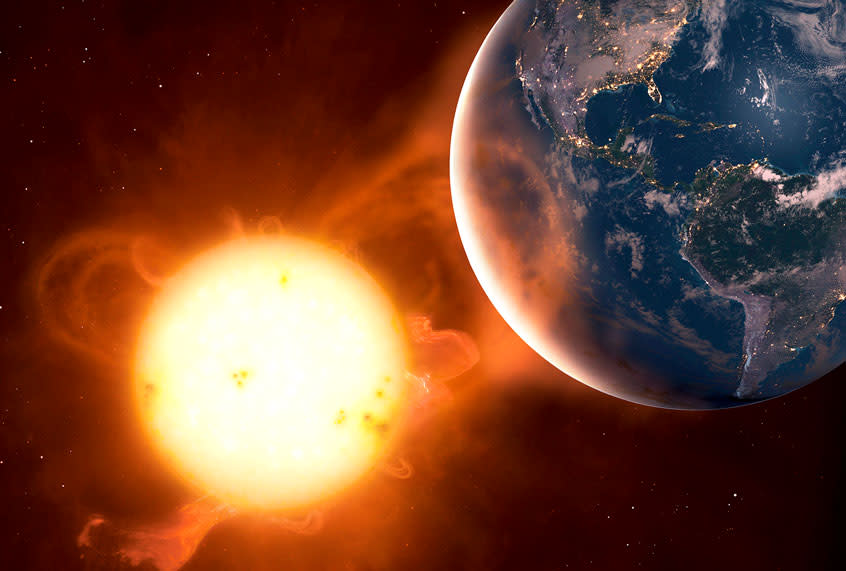Massive solar storm to hit Friday evening could disrupt communications, power and GPS, NOAA warns

The Space Weather Prediction Center (SWPC) — a division of the National Weather Service (NWS) — at the National Oceanic and Atmospheric Administration (NOAA) has issued a severe G4 Geomagnetic Storm Watch for the evening of Friday, May 10. G4 is the second-highest grade of geomagnetic solar storm and additional solar disruptions may cause continued geomagnetic storm conditions through the weekend, according to NOAA.
Coronal mass ejections (CMEs) and solar flares appear to be directed at the Earth, and the storms they produce at G4 intensity can potentially disrupt satellite communications such as GPS and certain internet connections, certain parts of the electrical power grid, radio signals as possible cell phone communications. The SWPC said it has notified the operators of these systems so they can take protective action.
An SPWC alert advises that Friday's G4 storm could cause "possible widespread voltage control problems" and that "some protective systems may mistakenly trip out key assets from the power grid." Satellite navigation systems could be "degraded or inoperable for hours" with high-frequency radio "sporadic or blacked out."
Cellular phone towers, wireless providers and website data hosting services could be impacted as a secondary effect of the above. Although not officially named as a cause, two major solar flares in February coincided with extended cellular network outages in some areas of the U.S.
“We’ve not seen any evidence in the past that a space weather storm could impact that now,” Space Weather Services chief Brent Gordon told reporters on a Friday conference call. “If power is not available for those, then yes, certainly, the secondary impacts from that would be great.”
According to the NWS, "the vast majority of NOAA Geomagnetic Scale 5 level storms (G5) will not cause catastrophic damage to the electric grid. On average, the Earth is impacted by such storms about four times during every 11-year solar cycle, so many large storms have impacted the planet since the Carrington Storm with much less signification impact."
The Carrington Event of 1859 was the largest recorded geomagnetic storm in history and caused extensive blackouts and dangerous power surges (mostly affecting telegraph systems) — but those effects occurred through the antiquated technology and power-regulation systems of the era.
The government advises preparing for geomagnetic storms as one would a severe thunderstorm, including building an emergency preparedness kit, making a communications plan with your family, and having non-digital versions of your list of critical contacts and any emergency medical paperwork. Make sure you have a supply of backup battery power or a backup generator, particularly for any medical devices. Use a phone or laptop charger that can be plugged into your vehicle for power in the event of a partial outage. Fill jugs with drinkable water and refrigerate or freeze them in order to keep food or medicine cold during a potential power outage. Keep your vehicles fuel tank at least half-full.
"Geomagnetic storms can also trigger spectacular displays of aurora on Earth. A severe geomagnetic storm includes the potential for aurora to be seen as far south as Alabama and Northern California," said the SWPC.
Solar eruptions that occurred on May 9 around 2 p.m. EDT were captured by NOAA's GOES-16 satellite and are available to view on YouTube.

